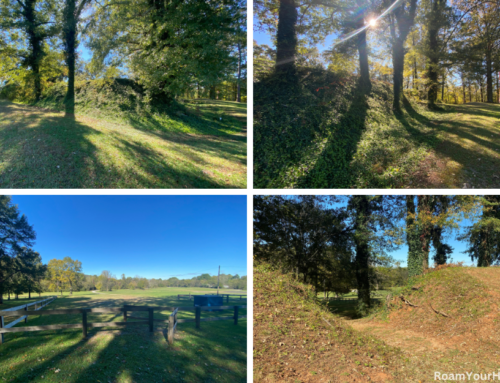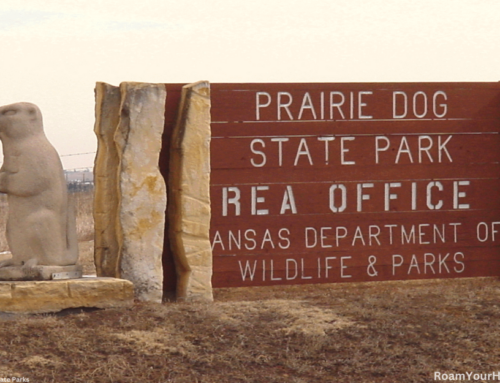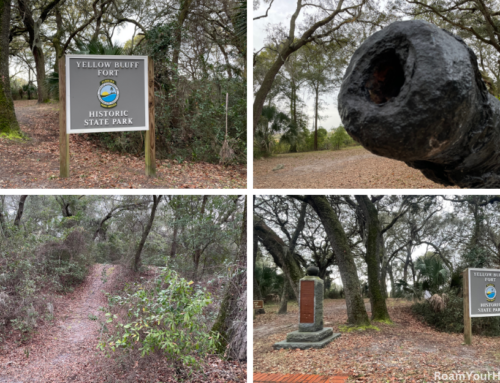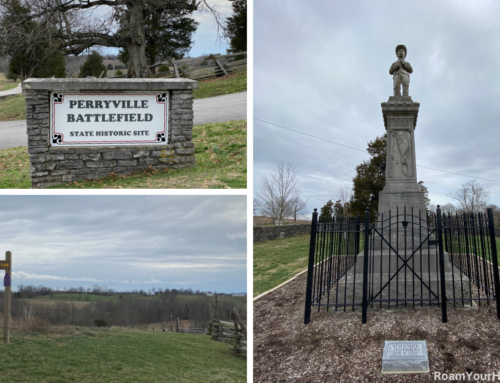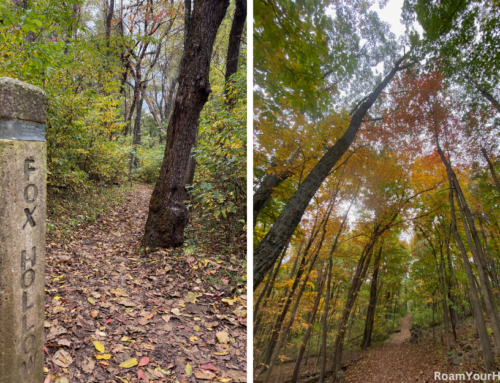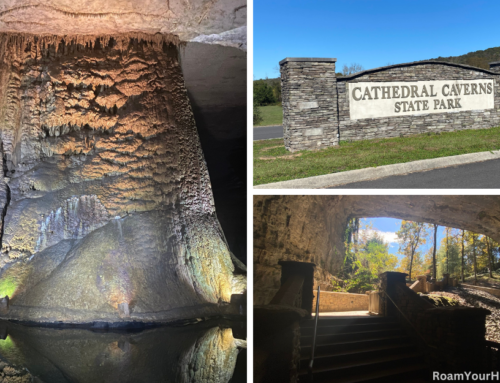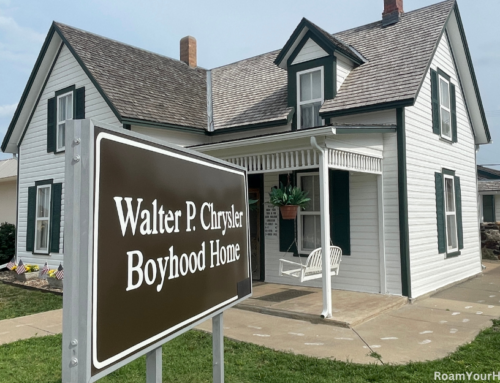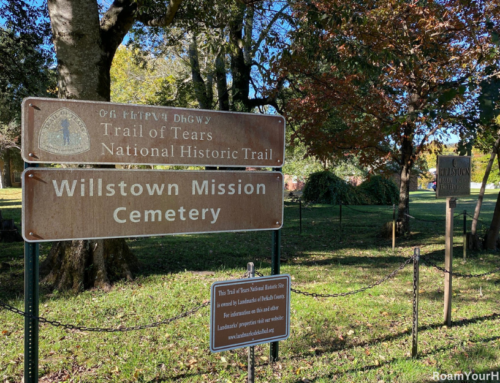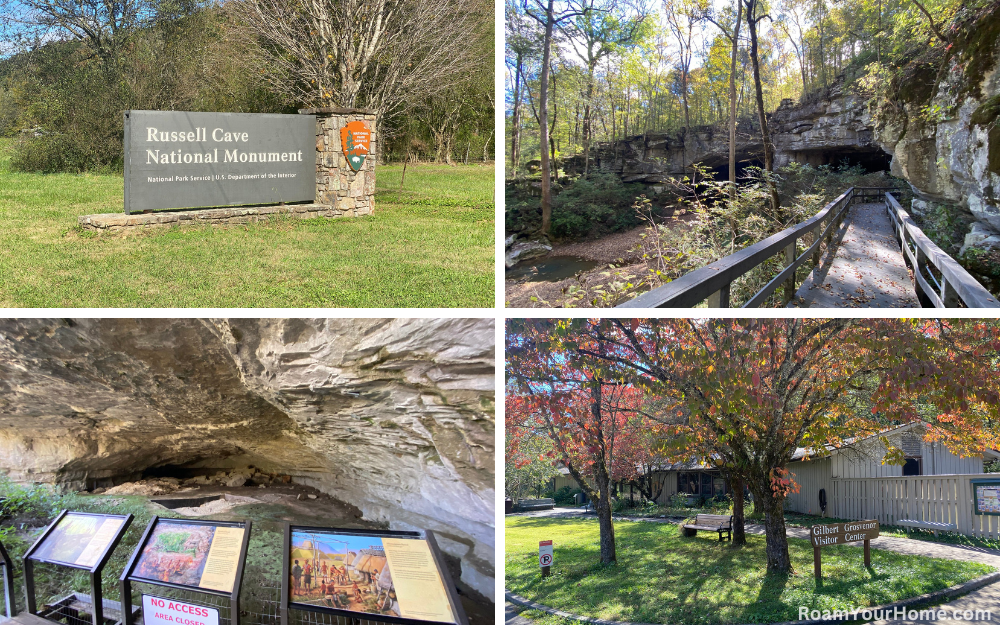
Russell Cave National Monument: Discover thousands of years of history
Russell Cave National Monument is in rural northeastern Alabama, just south of the Tennessee line. The site protects 10,000 years of Native American history.
We pulled into the parking lot on an early fall afternoon. I was not quite sure what to expect; I’d only read a very brief amount about the monument online. The parking lot was not very big, about 20 spots or so, and it was basically empty when we parked.
We walked into the Visitor Center and spoke with a park volunteer who directed us down a boardwalk to see the cave. After walking around and checking out the exhibits in the V.C., which included artifacts discovered in the cave, we decided to head down the trail.
- Trail Name: Cave Trail
- Trailhead Location: Visitor Center
- Distance: 0.8 Miles Round Trip
- Difficulty: Easy
- Elevation Gain: Minimal
- Type: Out & Back
- Features: Cave, Accessible
- Dogs: Yes – On Leash
Hiking the Russell Cave Trail
The Cave Trail is very easy. It’s a 0.4-mile roundtrip out-and-back boardwalk leading to Russell Cave’s entrance. When we were there, it was a hot and very muggy day. Mosquitos were thick, and I really regretted not putting on bug spray.
The boardwalk was well-maintained and peppered with falling leaves from the surrounding forest. We arrived at the cave in no time. On the overlook directly before the cave, it was noticeably cooler and breezier, a welcome surprise that helped mitigate the bugs!
Exploring Russell Cave
With 7.2 miles mapped, Russell Cave is the third-longest mapped cave in Alabama and the 90th in the United States. While once permitted, caving is no longer permitted in the cave because of its incredible cultural significance.
There is documented proof people have used the cave for roughly 10,000 years.
The right entrance to the cave provided shelter from bad weather, while the left entrance gave fresh, flowing water. These two things made Russell Cave an excellent home for early Native Americans.
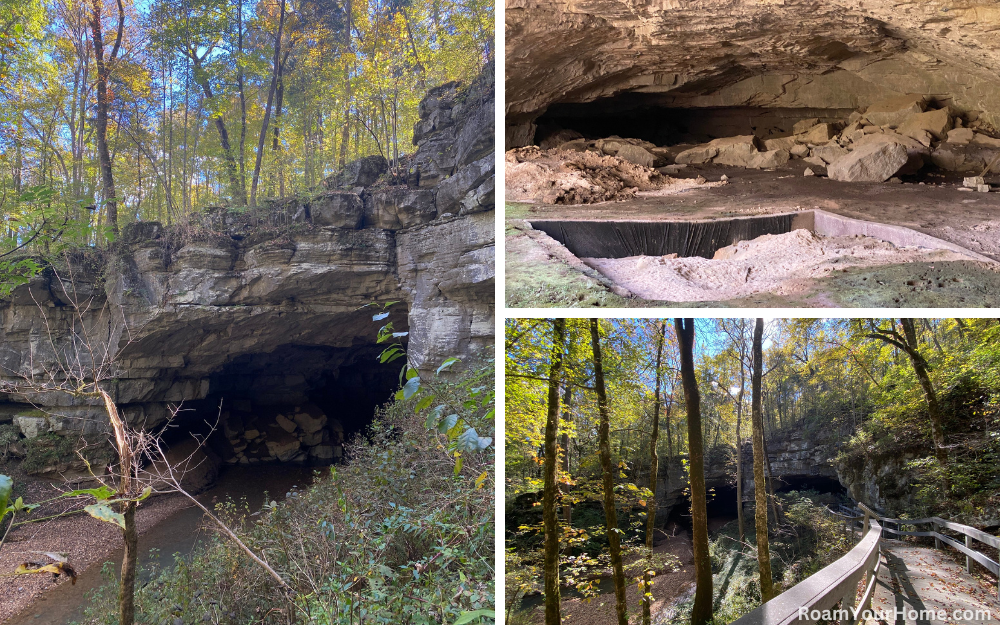
History of the cave
Archeologists performed excavations in the 1950s, leading to President John F. Kennedy declaring it a National Monument in 1961. But again, its history is thousands of years old.
The earliest evidence found is from the Paleo-Indian Period, more than 9,500 years ago. On the right side, Archaeologists found spearpoints from this period. It’s thought the Indians used the cave shelter, water, and easy access to surrounding abundant game.
During the Archaic Period, at least 2,500 years ago, the cave was believed to be used for the same reasons. It is an excellent base for hunting and gathering. An “atlatl,” which is essentially a spear launcher used to hunt game, was found from this time period.
Russell Cave was also used during the Woodland Period, which was from 2,500 to 1,000 years ago. But, during this time period, it was less used as a permanent home and more likely served as a winter hunting camp. During the Woodland Period, Native Americans developed large mound villages and made technological and agricultural advances. With this came less of a need to use caves and dwellings.
During the Mississippian Period, from 1,000 to 450 years ago, the cave was again used sporadically, possibly as a shelter for hunting or a stopover for trading parties traveling from as far away as the Great Lakes regions.
We spent about 45 minutes enjoying the cave and hiking the boardwalk. We also hiked part of the 1.2-mile nature trail. I was surprised by the amount of wildlife we saw.
Birding at Russell Cave
The cave was clearly the highlight, but the number of birds we heard and saw was incredible. Russell Cave is site number 44 on the North Alabama Birding Trail. About 50 percent of Alabama’s bird species can be seen in the park. The most common are scarlet tanagers, American robins, Northern cardinals, finches, nuthatches, warblers, and Eastern bluebirds. But keep an eye peeled for bald eagles, red-tailed hawks, great blue herons, pileated woodpeckers, red-bellied woodpeckers, and great egrets. They are also seen in the monument.
Where to stay?
No camping is available in the monument, but about an hour’s drive south is Cathedral Caverns State Park. It has camping facilities available and is also worth a visit. The cave tour is incredible.
Where is Russell Cave National Monument located?
The closest metropolitan area to the monument is Chattanooga, Tennessee, which is about 42 miles or a 45-minute drive away.
The monument is located about 71 miles or 1:20 away from Huntsville, Alabama, and about 2:45 away from Atlanta, Georgia.


